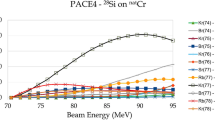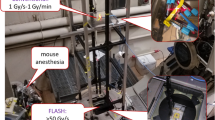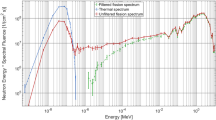Abstract
FOR a long time, it has been the practice among nuclear physicists to take “radiographs” with beams of accelerated light nuclei to determine the location of detector targets and magnet edges relative to the position of the beam. Sharp outlines of even thin objects, for example wires of 1 mm diameter, could be clearly seen with their edges flanked by a bright line outside the edge and a dark line inside it.
This is a preview of subscription content, access via your institution
Access options
Subscribe to this journal
Receive 51 print issues and online access
$199.00 per year
only $3.90 per issue
Buy this article
- Purchase on Springer Link
- Instant access to full article PDF
Prices may be subject to local taxes which are calculated during checkout
Similar content being viewed by others
References
Merzbacher, E., and Lewis, H. W., Handbuch der Physik, 34, 166 (Springer-Verlag, 1958).
Koehler, A. M., Science, 160, 303 (1968).
Berger, H., Lapinski, N. P., and Beyer, N. S., Proc. Eighth Symposium on Non-destructive Evaluation in Aerospace, Weapons Systems, Nuclear Appfications (Southwest Research Institute, San Antonio, Texas, 1971).
Author information
Authors and Affiliations
Rights and permissions
About this article
Cite this article
WEST, D., SHERWOOD, A. Radiography with 160 MeV Protons. Nature 239, 157–159 (1972). https://doi.org/10.1038/239157b0
Received:
Revised:
Issue Date:
DOI: https://doi.org/10.1038/239157b0
This article is cited by
-
Advances in accelerator based analysis techniques
Journal of Radioanalytical Chemistry (1981)
-
Radiography with protons
Die Naturwissenschaften (1974)
-
Proton Radiographic Detection of Strokes
Nature (1973)
Comments
By submitting a comment you agree to abide by our Terms and Community Guidelines. If you find something abusive or that does not comply with our terms or guidelines please flag it as inappropriate.



